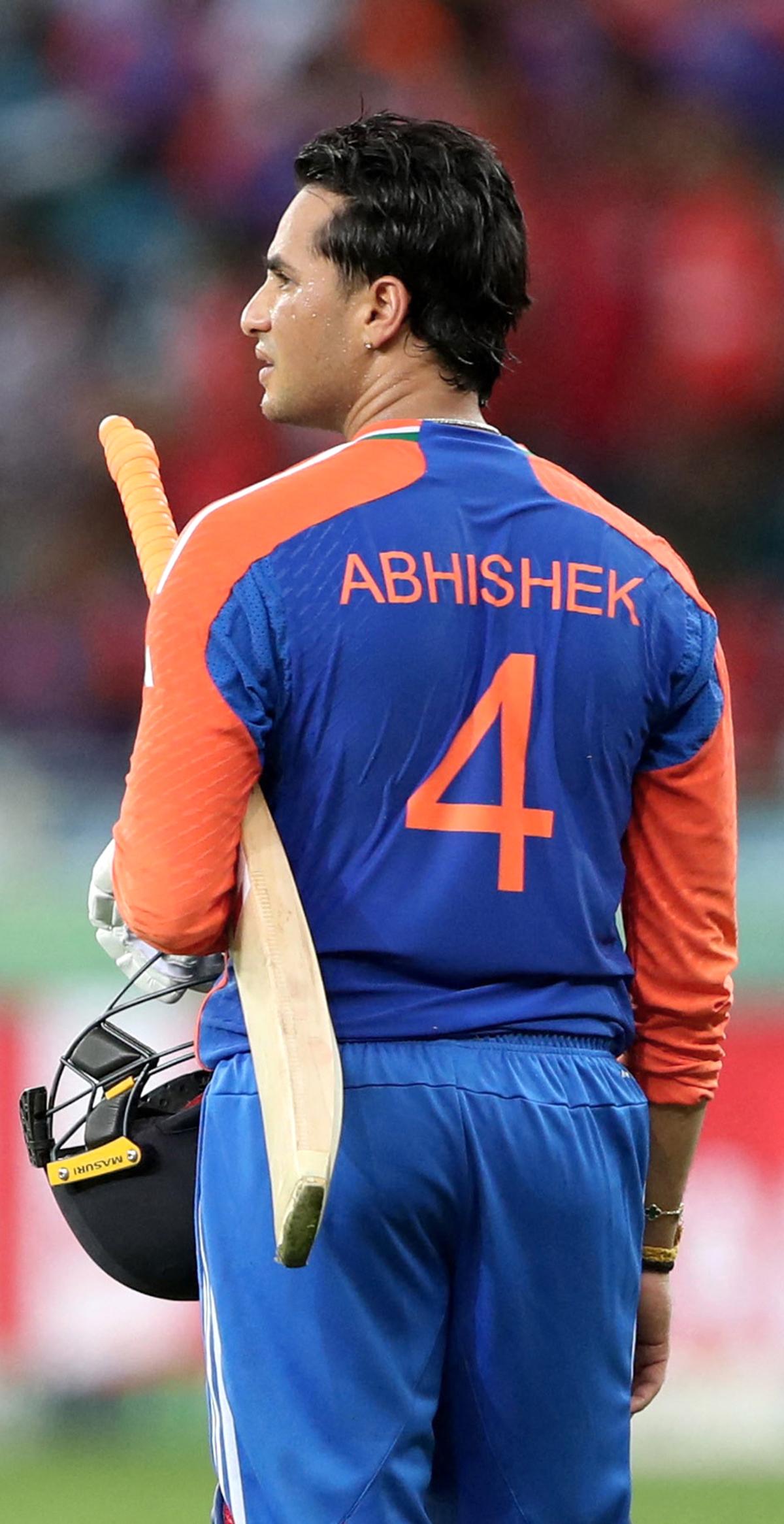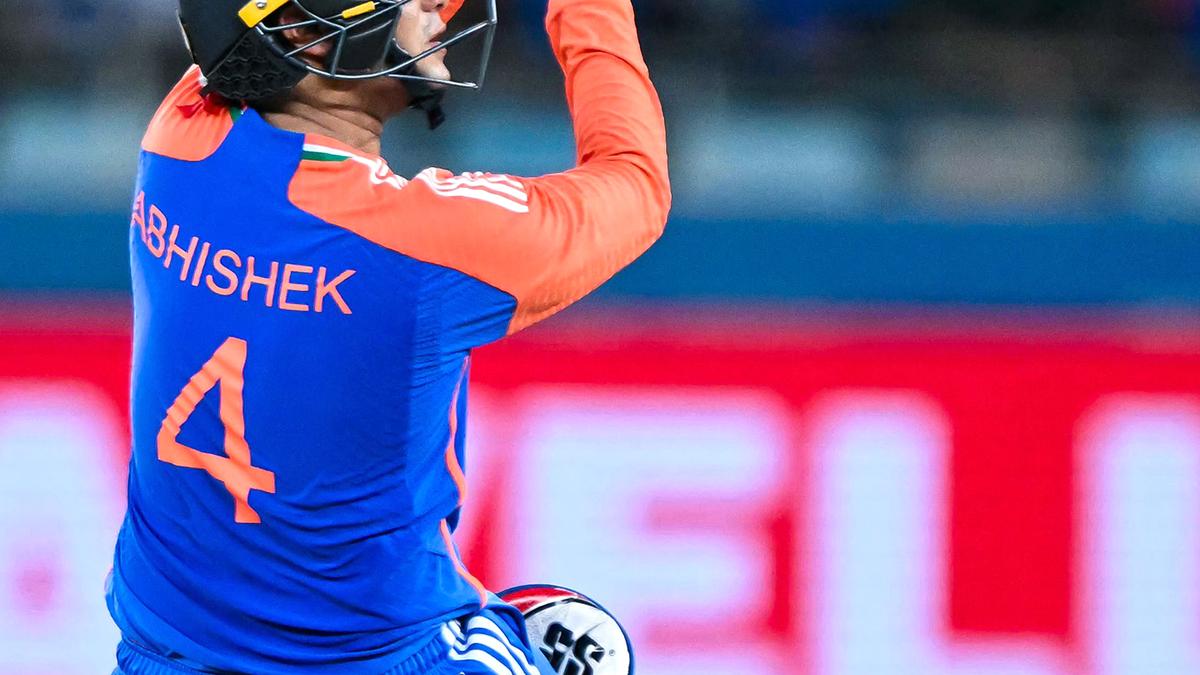Abhishek Sharma was 16 years young when he made his senior representative debut for Punjab, in the 50-over Vijay Hazare Trophy against Vidarbha in February 2017. By all accounts, it was a successful maiden venture for the left-hander, who followed up two for 51 with his left-arm spin with a fluent 46 that applied the finishing touches to his side’s comfortable six-wicket victory.
At the Feroz Shah Kotla (not the Arun Jaitley Stadium) in the national capital, the precocious teenager provided glimpses of his raw talent. An uncut diamond, he showcased understandable rough edges, but also a composure and maturity way beyond his years. If he kept at it, grew organically, didn’t allow distractions to overwhelm him and committed himself to the sport, a long and successful career seemed destined to be his.
But destiny has plans of its own, and for the next few years, he meandered along the unforgiving cauldron of Indian domestic cricket. He did make it to the India Under-19 outfit under Prithvi Shaw that won the World Cup in New Zealand in 2018, but while he wasn’t anonymous, he wasn’t a game-changer either. Batting in the middle order at the time, he faced just 66 deliveries in making 78 runs from three innings; his bowling was a little more in focus, six wickets at an economy of 3.91 reiterating his value as an all-rounder in the making.
That World Cup, when Rahul Dravid was the coach, brought Shubman Gill into sharp focus. Abhishek’s friend from their days of playing cricket together at the Under-14 level, the classy right-hander was the Player of the Tournament with 372 runs, the second most behind West Indian Alick Athanaze. Gill caught the eye with his flourish and his timing, with his punchy backfoot play and regal elegance. He was the all-conquering general while Abhishek was one of many foot soldiers who did his bit in helping India extend their hegemony over the Under-19 World Cup.
Gill was fast-tracked into international cricket within a year but there was no indication until much later that Abhishek would follow his great buddy into the national ranks. By then, he had endured numerous cricketing setbacks – another youngster might have chucked it all away – but instead of allowing those to bog him down or define him, he put the lessons learned the hard way into terrific use.
Ahead of IPL 2018, Delhi Capitals procured his services and while he played just three games, a highest of 46 not out and a strike-rate of 190.90 despite batting in the middle order suggested what he was capable of. The following year, he was snapped up by Sunrisers Hyderabad; there was no immediate hint of what was to follow, but that move down south, when V.V.S. Laxman was the mentor of the team, would turn out to be a seminal moment in the young lad’s career.
Abhishek was one of many young and gifted Punjab cricketers to come under the tutelage of Yuvraj Singh. The dashing left-hander might have seen shades of himself in the clean-cut, ear-studded teenager because he was immediately on the phone to Laxman, extolling Abhishek’s virtues. Even so, it took a while for Abhishek to step out of the shadows. His first three years with the 2016 champions – Yuvraj was an integral part of that side which went all the way under David Warner – were hardly fulfilling, but the larger world got a first glimpse of what he was capable of in 2022 when, in 14 matches, he scored 426 runs. His strike-rate wasn’t flash, 133.13, but he had wended his way into the consciousness of a larger audience and especially in India where these things count for a great deal, that was no mean accomplishment.

The next season was middling, but the breakthrough came in IPL 2024 when the Hyderabad franchise decided that enough was enough, that it needed to distance itself from the torpor that had come to characterise its cricket. The bond with Warner was severed; the Australian, a popular figure in the City of Nawabs but a polarising one within the team, was batting from distant and fading memory and their brand of cricket had downgraded from electric to pedestrian. A tectonic change in mindset resulted in Daniel Vettori coming on board as head coach, Pat Cummins taking over as captain and Travis Head being bought to espouse the aggression the team was desperate to portray.
Oh, and Abhishek found his calling. As Head’s partner, an equal destroyer in an opening alliance for the ages, a fusion of fire and fire, of power and muscle, of fours and sixes. Indian cricket hasn’t been the same again.
Making a mark
Sunrisers made it to the final of the tournament where they were bested by Shreyas Iyer and Kolkata Knight Riders, but the emphatic statements Abhishek was looking for came in style. In breathtaking fashion. He blasted to 484 runs, with 42 sixes and 36 fours. His average of 32.27 was buttressed by a strike-rate of 204.22. Imagine that – more than 200 runs per 100 balls faced on average, over a period of 16 games and 237 deliveries. It was more than exhilarating. It compelled the selectors to turn to him at a time when India were moving on from the Rohit Sharma-Virat Kohli era and looking for resources both short- and long-term to carry forward India’s changed mindset towards the 20-over game. How could one look beyond this affable, smiling, well-mannered and quietly spoken young man from Amritsar?
By the time Abhishek earned his maiden call-up last July, for a five-match T20I series in Zimbabwe, Gill had rapidly climbed the international rungs. Their relationship remained unaffected by the diverse paths their respective careers had taken. They must have felt there was unfinished business to take care of. Like Sachin Tendulkar and Vinod Kambli from their school days, this pair yearned to share an Indian dressing room, craved batting alongside each other in the country’s colours.
Sometimes, dreams do come true.
Abhishek’s first international foray, just days after Rohit lifted the T20 World Cup in Bridgetown, came under Gill. Who would have thought? Most of the regulars from the World Cup campaign were rested as Gill, by then well entrenched in the Test and One-Day International sides, was given the chance to showcase his leadership skills. On 6 July 2024, the two men walked out to open India’s batting in the first T20I at the Harare Sports Club; Gill’s captaincy career got off to a terrible start as India lost a low-scoring thriller by 13 runs, Abhishek’s first hit was one to forget as he fell for a four-ball duck, caught in the deep on the pull.
Hmmm, what next?
Next, was a jaw-dropping century the following day. Abhishek of Sunrisers Hyderabad was now Abhishek of India. 47 balls is all it took for him to scream quietly from the rooftops that he is no IPL show pony, that he ought not to be defined by zero off four on debut. The six-fest continued as he smashed eight of them. By the time the hour-long entertainment ended, Abhishek was here to stay. So much so, that India now can’t even fit the exceptional Yashasvi Jaiswal into the T20 mix.
Abhishek has a seemingly high-risk game, but it is not based on a wing and a prayer. He doesn’t slog so much strike the ball. His areas of scoring are all conventional, mostly but not entirely down the ground. When he comes down the track to even the quickest of bowlers, he does so without losing shape. He charges, but not blindly. There is grace and balance, the head steady despite the shimmy, the bat an extension of his arms as it cuts a full flourish in a giant arc starting from an exaggerated backlift to an unchecked followthrough.
Abhishek came into the Asia Cup having made a second T20I hundred seven months previously, in India’s last outing before the continental event. England, hapless England, were at the receiving end at the Wankhede. Jofra Archer and Mark Wood tested out the bounce in the surface, Abhishek tested out the length of the boundaries. When he was done, he had clattered 13 sixes, each disappearing into the stands with telling finality. Adil Rashid barely celebrated when Abhishek was caught by Archer at sweeper cover. How could you, when the batter had hammered 135 off 54 deliveries?
From one-time bit-player, Abhishek had become the new hitman. Step aside, Rohit Sharma.
The Asia Cup was another illustration of Abhishek’s growing influence on India’s T20I side. He is only 25 – but still more than two years older than Player-of-the-final Tilak Varma – but the wise head on his sturdy shoulders is beginning to reveal itself with each passing day. He and Shaheen Shah Afridi had played in the same Under-19 World Cup though Abhishek hadn’t faced the left-handed Pakistani quick previously. He hit Afridi for four and six off the first two balls of the group fixture, then walked inside the line and pulled the first ball for six in the Super Four clash a Sunday later. But the peachiest of them came in the final. Abhishek ran down the track, realised the length wouldn’t allow him to hit over the top through the line, so he held himself in check for a fraction of a second and offered a semi-horizontal bat, as if in dead defence. The ball sped off his willow, singed turf at point and hurtled to the fence as if dismissed with brutal violence, not with iridescent timing and impeccable placement. It was his only boundary of the title clash, but it was almost enough.
Abhishek was the Player of the Asia Cup for 314 exceptional runs, scored at exactly two runs per ball. That award could have so easily gone to left-arm wrist-spinner Kuldeep Yadav, who had 17 wickets from seven outings, but so captivating was Abhishek’s magnetic presence that the adjudicators found it impossible to look beyond him. For Abhishek, this recognition is only the beginning; he has promised more, and on the evidence available now, it’s hard to see him not delivering on that promise.

